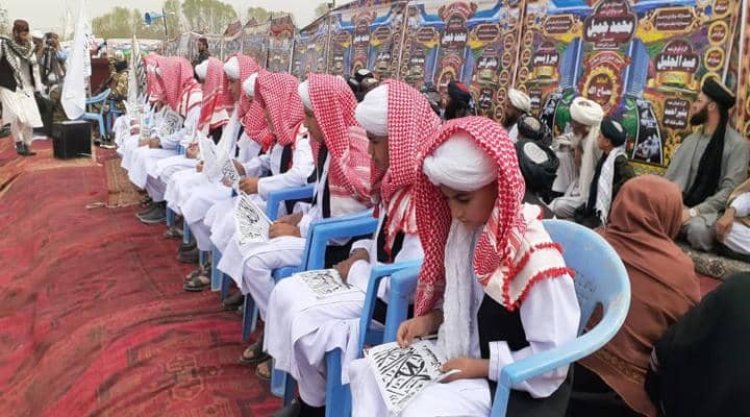Taliban mandate traditional attire and turban as official school uniform

The Taliban have introduced a new directive requiring schoolboys and teachers in public schools to wear traditional attire, including a long tunic (pirhan) and trousers (tonban) along with a turban. This nine-article decree, approved by the Taliban’s supreme leader, Hibatullah Akhundzada, mandates adherence to this dress code across all public schools in Afghanistan.
According to the directive, wearing a turban is compulsory for students, and the length of the tunic must extend below the knees. The decree also bans tight and thin clothing.
Students from grades 1 to 9 are required to wear sky-blue tunics and trousers with either a turban or a cap, while students in grades 10 to 12 must wear white tunics and trousers along with a turban. Teachers are also required to wear traditional attire, including a turban or cap, while religious school instructors must dress in clothing deemed suitable for Islamic scholars.
The decree states that private schools have the discretion to decide on their uniforms, but public school students must comply with the new regulations nationwide. Oversight of the implementation of this policy has been assigned to the Taliban’s Monitoring and Evaluation Directorate.
This move follows the Taliban’s earlier changes to the national curriculum. The Taliban’s Minister of Higher Education recently claimed that Afghanistan’s previous education system failed to meet the country’s needs, and the group has revised it “in accordance with Islamic and national values.”
Public Concerns Over Taliban’s Educational Policies
Many Afghans have expressed concern over the Taliban’s increasing control of the education system.
Maryam, the mother of an 11th-grade student, shared her fears:
"I am deeply worried. God knows what they will be teaching our boys in school now and what they will force them to do. I fear that if my son continues under this system, he might become a Taliban fighter, but if he refuses, what future will he have?"
Another mother, whose daughters have been barred from school, said:
"For four years, I’ve worried about my daughters' education and their uncertain future. Now I also fear that my son will graduate not as an educated person, but as a Taliban member or a cleric."
Ahmad, a 10th-grade student, expressed his concerns:
"I fear that our school will start resembling a madrasa, where we are taught to embrace violence instead of knowledge. Wearing this uniform and obeying these rules makes me feel like a puppet with no control over my future."
Taliban’s Growing Influence Over the Education System
In a report published in December, the human rights organization Rawadari highlighted the Taliban’s widespread and systematic changes to Afghanistan’s education system. These changes not only affect the curriculum but also the fundamental policies and principles of education.
The report revealed that the Taliban have removed several academic and cultural subjects, such as history, social sciences, and arts, replacing them with topics like "Emirate Studies" and Hanafi jurisprudence—aimed at promoting the Taliban’s ideology. Additionally, many experienced teachers have been replaced with Taliban-affiliated clerics who lack higher education and teaching qualifications.
The Taliban’s Ministry of Education has reported that as of this year, the number of religious schools (madrasas) across Afghanistan has surpassed 21,000.
The new school uniform directive is seen as another step in the Taliban’s broader effort to reshape Afghanistan’s education system in line with their religious and ideological beliefs.
